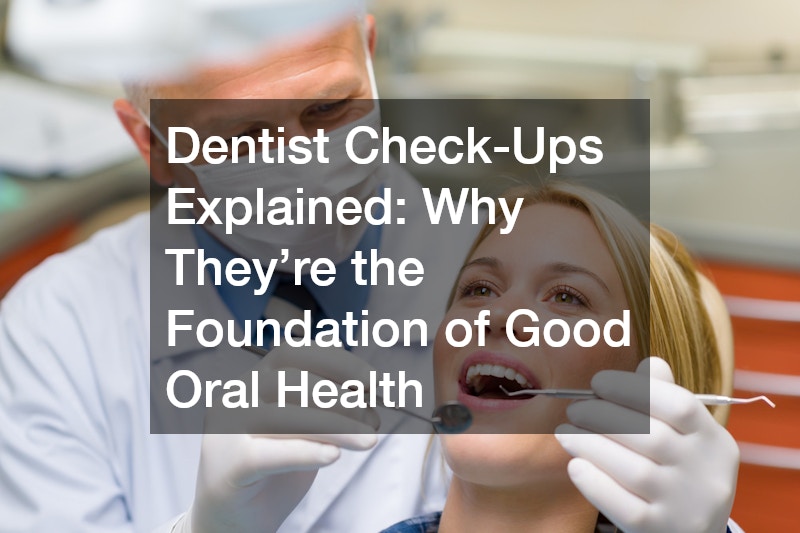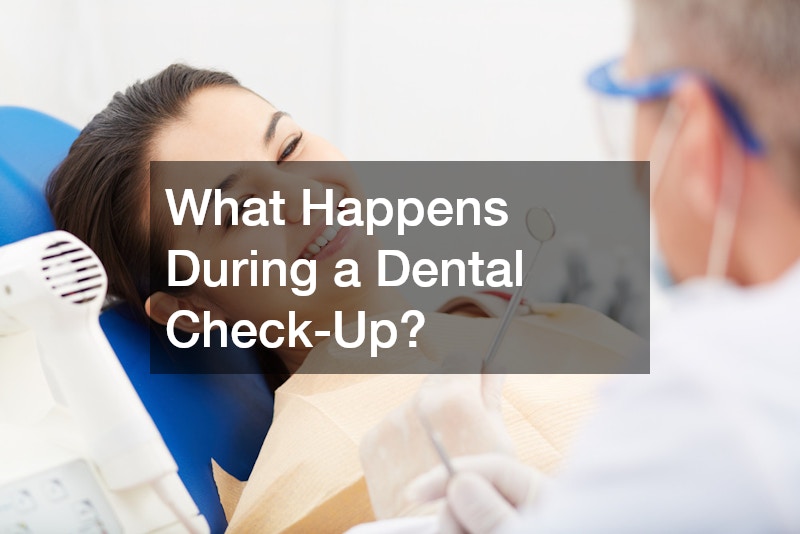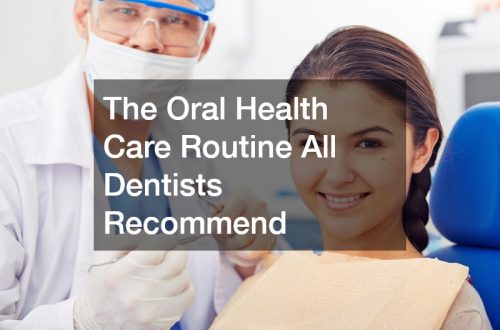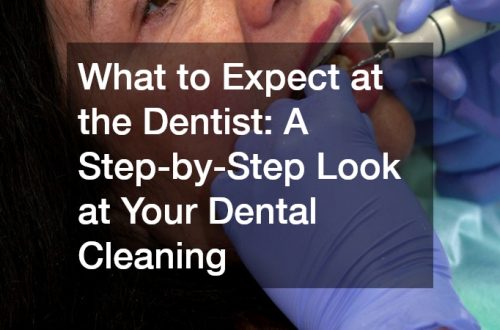Introduction
Regular dentist check-ups are crucial for maintaining optimal oral health. These appointments not only help in preventing dental issues but also contribute to overall physical well-being. In this article, we explore the importance of regular dental visits and outline what typically occurs during a dental check-up.
Why Are Regular Dental Check-Ups Important?
1.1 Early Detection of Oral Health Issues
One of the primary benefits of regular dentist check-ups is the early detection of potential oral health issues. Dentists can spot signs of cavities, gum disease, or oral cancer in their infancy, which allows for quicker and often less invasive treatment.
Catching these problems early can save both time and money in the long run.
Dental professionals are trained to notice subtle changes or symptoms that individuals might miss. This early intervention is crucial because most oral health problems are easier to treat when identified early. A visit every six months can be the difference between a small filling and root canal therapy.
Moreover, early detection plays a significant role in the connection between oral health and overall health. Many systemic conditions can have oral symptoms, and a dentist can be the first line of defense. Conditions such as diabetes, heart disease, and osteoporosis often manifest initially in the mouth.
1.2 Preventive Care Benefits
Regular dental check-ups offer an opportunity for preventive care, helping to keep oral health issues at bay. Preventive measures include professional cleanings that remove plaque and tartar, which cannot be eliminated by regular brushing and flossing. These cleanings help prevent gum disease and cavities from developing.
During the check-up, a dentist will also evaluate the effectiveness of a patient’s oral hygiene routine. They can offer advice on areas that might need more attention and recommend products or techniques for improvement. This tailored guidance helps ensure that patients maintain their oral health between visits.
Additionally, preventive care often includes the application of fluoride treatments or sealants, particularly for children. These measures strengthen the teeth and provide a protective barrier against decay. Implementing such preventive strategies is a cornerstone of maintaining long-term dental health.
1.3 Overall Health Connections
There is a significant connection between oral health and overall physical health, underscoring the importance of dentist check-ups. Poor oral health has been linked to various systemic conditions, making regular dental visits even more critical. For instance, gum disease has been associated with an increased risk of heart disease, stroke, and diabetes.
During a dental check-up, a dentist can identify early signs of health problems that might otherwise go unnoticed. Recognizing these symptoms early can prompt a patient to seek necessary medical evaluations and treatment. This early intervention supports better overall health management.
The relationship between oral and overall health is a two-way street. Not only do oral problems indicate potential systemic issues, but certain health conditions can also complicate oral care. Regular dental check-ups provide a comprehensive approach to health, addressing both oral and systemic concerns.
What Happens During a Dental Check-Up?
2.1 Initial Examination
The initial examination is the first step in a dental check-up, where the dentist conducts a thorough review of the patient’s oral health. This involves visual inspection of the teeth, gums, and other oral tissues for signs of decay, infection, or abnormalities. The dentist may also review the patient’s medical history to identify potential health issues that could impact oral care.
During the examination, the dentist will assess the alignment of the teeth and the condition of existing dental work, such as fillings or crowns. They might measure the space between gums and teeth to check for signs of periodontal disease. This comprehensive evaluation ensures that no potential issue is overlooked.
The initial examination provides the foundation for any necessary treatment plans. If the dentist finds any areas of concern, they will discuss potential interventions with the patient. This open communication fosters a collaborative approach to maintaining oral health.
2.2 Professional Teeth Cleaning
Professional teeth cleaning is an integral part of the dental check-up process, focusing on removing plaque and tartar buildup. Tartar can only be removed by a dental professional using special tools, as it cannot be brushed or flossed away. Removing these deposits is crucial to preventing gum disease and tooth decay.
During cleaning, a hygienist may use ultrasonic instruments and manual scaling tools to thoroughly clean the surfaces of each tooth. This process can be particularly beneficial for plaque-prone areas, as it helps prevent them from developing into more serious issues. Once the teeth are plaque-free, polishing helps remove stains and leaves the teeth smooth and shiny.
Regular cleanings not only improve the aesthetics of a smile but also contribute to better breath and gum health. For many, the sensation of clean, refreshed teeth is a motivating reason to adhere to recommended check-up schedules. Maintaining this routine is vital for sustaining long-term oral health.
2.3 Diagnostic X-rays
Diagnostic x-rays are a pivotal component of dental check-ups, allowing dentists to see beyond what is visible to the naked eye. These X-rays help identify issues that might be lurking beneath the surface, such as impacted teeth, bone loss, or hidden decay. By providing a comprehensive view of the teeth and jawbone, X-rays are instrumental in comprehensive dental diagnosis.
The use of X-rays is targeted and efficient, often conducted annually or biannually, depending on the patient’s individual needs. Despite some patients’ concerns about radiation exposure, modern X-ray technologies employ minimal radiation, making them safe for regular use. The insights gained from X-rays facilitate more effective treatment planning and prevention strategies.
The information from diagnostic X-rays enables dentists to make informed decisions on preventive and corrective treatments. By identifying potential issues before they manifest into more severe problems, patients can avoid more invasive and costly treatments down the road. This foresight underlines the importance of regular dental imaging in maintaining oral health.
How Often Should You Visit the Dentist?
Standard Recommendations
The general recommendation for dental visits is twice a year, although this frequency may vary depending on individual needs and risk factors. Biannual visits are considered sufficient for monitoring oral health and applying preventive care. However, some individuals may require more frequent check-ups due to specific oral or health conditions.
Routine visits every six months help in managing dental health proactively, reducing the risk of emergency treatments. Many dental insurance plans cover biannual check-ups and cleanings, encouraging patients to adhere to this schedule. Regular check-ups ensure that any emerging issues are caught early and managed effectively.
It’s essential to consult with a dentist to determine the most appropriate frequency for individual circumstances. Factors such as age, lifestyle, and medical history can influence the ideal schedule. Personalized recommendations offer a tailored approach to maintaining optimal oral health.
Factors That Influence Frequency
Several factors can influence the frequency of an individual’s dental visits. People with a history of gum disease or tooth decay may need more frequent appointments to monitor and manage their conditions. Additionally, lifestyle choices, such as smoking or a high-sugar diet, can increase the risk of oral health issues, necessitating more frequent check-ups.
Similarly, those with underlying health conditions like diabetes or osteoporosis should consult their dentist for a personalized care plan. The interaction between these conditions and oral health underscores the importance of regular check-ins. These tailored visits ensure that oral health is managed in conjunction with overall health requirements.
Age is also a factor, with children and seniors often needing more attention. Young children may require more frequent visits to monitor their dental development, while older adults may need regular assessments to maintain prosthetics or manage age-related oral health changes. Such individual considerations highlight the importance of regular, personalized dental care.
Conclusion
In conclusion, regular dental check-ups serve as the cornerstone of good oral health. They facilitate early detection, enable preventive care, and help bridge the connection between oral and overall health. By adhering to recommended check-up schedules and tailoring visits to individual needs, patients can maintain their oral health and enhance their overall quality of life.








